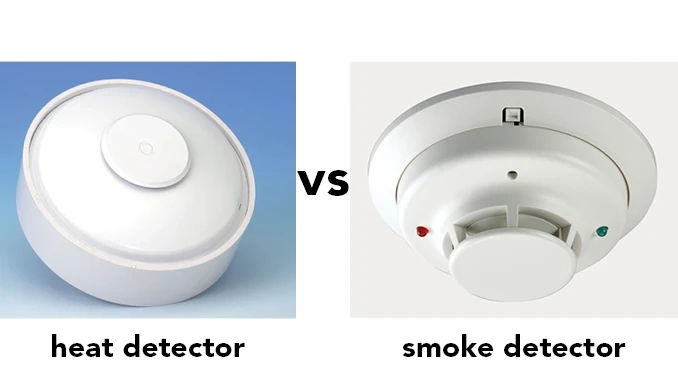When it comes to fire safety, having the right detection system in place can mean the difference between a minor incident and a devastating disaster. Two of the most common devices used for fire detection are smoke alarms and heat detectors. While they may seem similar, they serve distinct purposes and are designed for different environments. Understanding the differences between them can help you choose the right system for your home or workplace.
What is a Smoke Alarm?
A smoke alarm is a device designed to detect smoke, which is often the first sign of a fire. It uses sensors to identify particles in the air caused by combustion. When smoke is detected, the alarm sounds a loud warning to alert occupants of potential danger. Smoke alarms are typically installed in areas where fires are most likely to start, such as kitchens, bedrooms, and hallways.
There are two main types of smoke alarms:
- Ionization Smoke Alarms: These are more sensitive to fast-flaming fires, such as those caused by paper or grease.
- Photoelectric Smoke Alarms: These are better at detecting slow, smoldering fires, like those caused by cigarettes or electrical wiring.
Some modern smoke alarms combine both technologies (dual-sensor alarms) to provide comprehensive protection.
What is a Heat Detector?
A heat detector, on the other hand, is designed to respond to changes in temperature rather than smoke. It triggers an alarm when the surrounding temperature reaches a certain threshold or when the temperature rises rapidly. Heat detectors are less sensitive to smoke and are often used in areas where smoke alarms might cause false alarms, such as kitchens, garages, or dusty industrial environments.
There are two main types of heat detectors:
- Fixed Temperature Heat Detectors: These activate when the temperature reaches a preset level, usually around 135°F to 190°F (57°C to 88°C).
- Rate-of-Rise Heat Detectors: These respond to a rapid increase in temperature, even if the overall temperature hasn’t reached the preset threshold.
Key Differences Between Smoke Alarms and Heat Detectors
- Detection Method:
- Smoke alarms detect smoke particles in the air.
- Heat detectors respond to changes in temperature.
- Response Time:
- Smoke alarms typically provide earlier warning since smoke is often present before a fire produces significant heat.
- Heat detectors may take longer to activate, as they rely on temperature changes.
- False Alarms:
- Smoke alarms can be triggered by steam, dust, or cooking smoke, leading to false alarms.
- Heat detectors are less prone to false alarms, making them ideal for environments with high levels of dust, moisture, or smoke.
- Ideal Locations:
- Smoke alarms are best suited for living areas, bedrooms, and hallways where early detection is critical.
- Heat detectors are better for kitchens, garages, attics, and industrial settings where smoke alarms might be impractical.
Which One Should You Choose?
The choice between a smoke alarm and a heat detector depends on the specific needs of your space. For most homes, smoke alarms are the go-to option because they provide early warning and are effective in detecting a wide range of fires. However, in areas where smoke or steam is common, such as kitchens or workshops, heat detectors can be a more reliable choice.
In many cases, a combination of both devices offers the best protection. For example, you might install smoke alarms in living areas and bedrooms while using heat detectors in the kitchen or garage. Additionally, interconnected systems that link smoke alarms and heat detectors can provide comprehensive coverage, ensuring that an alarm in one area alerts the entire building.
Conclusion
Both smoke alarms and heat detectors play crucial roles in fire safety, but they serve different purposes. Smoke alarms are ideal for early detection in living spaces, while heat detectors are better suited for areas prone to false alarms or extreme conditions. By understanding their differences and using them strategically, you can create a safer environment for your home or workplace. Remember, no matter which device you choose, regular testing and maintenance are essential to ensure they function properly when you need them most.
Fire safety is not something to take lightly. Investing in the right detection system could save lives and protect your property. So, take the time to evaluate your needs and choose the devices that best suit your environment. Stay safe!


